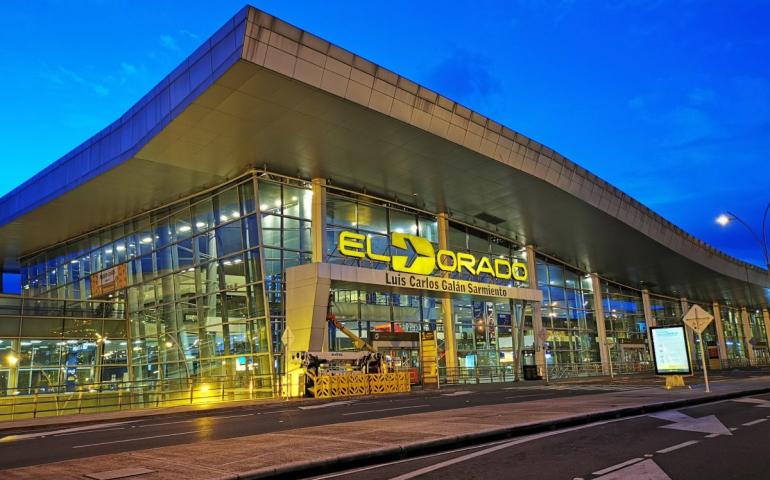
By Rob Walker
Can a mix of approaches deliver carbon-free flying, or are we just fueling the problem for future generations?
The adage “necessity is the mother of invention” could be talking about today’s aviation industry as it looks to bring down unacceptably high levels of CO2 emissions (2.4% of anthropogenic CO2 emissions in 2018). This is particularly important as flying is set to keep growing rapidly over the next few decades (perhaps by as much as 4.3% annually). Although COVID-19 has recently interrupted most domestic and international flights, its popularity is likely to return—and with it this upward trajectory of emissions.
Optimism and targets
The aviation industry has collectively agreed to the first set of sector-specific climate change targets as follows:
•1.5% fuel efficiency improvement from 2009 until 2020 (mainly via aircraft technology improvements).
• Carbon-neutral growth—a cap on net aviation CO2 emissions from 2020—supported by the Carbon Offsetting Scheme for International Aviation (CORSIA) scheme. Carbon neutral is defined as “balancing a measured amount of carbon released by an activity with an equivalent amount captured or offset.”
•A reduction in net aviation CO2 emissions of 50% by 2050, relative to 2005 levels, without limiting growth.
These targets reflect a great deal of optimism in the industry’s ability to reduce its carbon footprint. On a global basis, flights produced 915 million tons of CO2 in 2019. To meet the CO2 emission targets, the International Civil Aviation Organization (ICAO) has focused on the development of a “basket” of mitigation measures that include technology, operational improvements, sustainable aviation fuels, and market-based measures.
Aircraft technologies and standards
In many respects, this trust in pioneering technology seems to be well placed. The industry has already gone a long way to address environmental impacts and increase efficiencies. According to the Air Transport Action Group: “The aerodynamics of aircraft, the performance and efficiency of modern engines, and the operational improvements by airlines, airports, and air traffic systems have all combined to make aircraft over 80% more fuel efficient since the start of the jet age in the 1950s” This means that a flight in 2019 would generate just 50% of the CO2 compared with a similar flight taken in 1990.
The industry has implemented standards, polices, and guidance to make sure that innovations in technology are included in new aircraft. In addition to finding ways to reduce the aircraft’s weight, manufacturers are using the latest technology to reduce fuel consumption. Aerodynamic devices like wingtips can help to cut fuel use by some 5% on single-aisle jets. When airlines take planes out of service after two or three decades, they are replaced with lighter materials and more efficient engines.
Manufacturers are also putting great store in different kinds of propulsion that will be in use in another 10 years. New electric and hybrid electric models are showing promise, such as the Alice produced by Israeli’s Eviation team and the all-electric ACCEL model by Rolls Royce. However, these are small planes; the Alice can carry just nine passengers and the ACCEL just one. The reason we’re not yet seeing jumbo-sized carriers is that fossil fuels are much more energy dense than any contemporary electric battery. Where kerosene packs a punch with about 42 megajoules per kilogram, a lithium-ion battery can manage only about one megajoule per kilogram.
Flying at different altitude levels
One study from Imperial College found that altering the altitude of flights by less than 2% may be able to reduce aviation-induced climate change by 59%. Hot exhaust gases from aircraft produce condensation trails (or “contrails”) when the gases meet the cold, low-pressure air of the atmosphere. These can be seen as white streaks in the sky behind a jet aircraft. The contrails contain carbon particles that stay in the atmosphere for a considerable time and have a significant—and detrimental—impact on climate warming.
The study team used computer simulations to predict how altering aircraft altitudes might reduce the number of contrails and how long they persist in the atmosphere, which would minimize their warming impact. Contrails only form and remain in thin layers of atmosphere that have very high humidity. Because these layers are thin, small changes to flight altitudes means that the aircraft could avoid these regions altogether, leading to far fewer contrails forming.
The team found that flight altitude changes of just 2,000 feet could significantly lessen the effect. Used in conjunction with cleaner aircraft engines, the study says that climate harm caused by contrails could be reduced up to 90%.
Sustainable aviation fuels
The advances in technology and flight operations are not enough to cover the expected emissions growth. Therefore, it's necessary to consider other factors such as sustainable aviation fuels (SAF). These fuels, which have the benefit of being available and in use now, offer an alternative to fossil fuels like kerosene that have been powering commercial planes for over 50 years. SAFs mimic the properties of kerosene and are similarly energy dense but they are derived from feedstocks that are sustainable and not finite. They can be used with gas turbines without any need for modifications. The most compelling benefit for the aviation industry is that burning SAFs do not emit the same high level of GHG emissions produced by conventional aviation fuel.
Currently, approved SAFs require blending with fossil fuels. Some can achieve a blend of 50% and some only 30% or 10%. The aim is to find ways of producing these fuels so that they no longer need to be blended with conventional fuel. Although it is hard to predict how quickly this step can be achieved, ICAO has suggested that if SAF can contribute 100% of aviation fuel to the industry by 2050 it will reduce emissions by 63%.
At the moment SAFs account for just 0.01% of all aviation fuel used today. IATA says that the share could rise to 2% by 2025 only if governments provide incentives to help address the high costs. The industry has called for governments to help support suppliers as they develop systems for sufficient feedstock and refining plants.
Global market measures – offsetting
The CORSIA target, which only applies to international flights, requires airlines and operators to “offset” any growth in CO2 emissions above 2020 levels. This means that aviation’s net CO2 emissions will be stabilized, while other reduction measures—such as technology, SAF, operations, and infrastructure options—are pursued. There are different phases of the scheme (e.g., the first two are voluntary while the third is mandatory) in order to help secure the involvement of developing countries. It is anticipated that CORSIA will mitigate some 1.5 billion tons of CO2 between 2021 and 2035.
Uniform monitoring, transparency, and reporting is vital to its success. Carbon offsetting should be used only as a last resort and the other reduction measures should be prioritized in the effort to reduce CO2 emissions.
Is the faith in technology and innovation well placed?
Is the mix of technologies and measures outlined here likely to significantly bring down CO2 emissions? While the industry has made some progress to date, refining airport practices and introducing operational improvements are unlikely to tip the balance to secure substantial reductions in GHGs. New technologies such as SAFs and electric planes are encouraging but they are not at a stage where either could be viewed as game-changing or mainstream—and a jumbo electric aircraft might never be viable. We need large-scale technological advances now because climate change is a pressing problem requiring immediate action.
Research findings offer real hope. The recent Imperial College report suggesting that a small change in the altitude of flights can significantly reduce the warming impact is compelling. Not only does it appear to demonstrate a real breakthrough, it does so without requiring expensive new infrastructure and could be introduced quickly.
It may be that other research findings and new technologies will help to bring big reductions in GHG emissions, but these will have to be nothing short of revolutionary to be useful. And they will need to happen very rapidly. This is particularly important because we know that the popularity of commercial aviation is set to grow over the next several decades. Even if all these measures and improvements are pulled together, their combined force seems highly unlikely to bring a sharp reduction in CO2 emissions needed to reach the target of 50% by 2050.
Given the rapid onset of the worst aspects of climate change, we need to introduce hard-hitting measures now and phase them in within 5-10 years. The COVID-19 global lockdown has created useful changes in behavior: more companies are conducting business from home and communicating via videoconferencing technology. These new behaviors could be permanent after lockdown is lifted if the private sector put measures in place to reduce non-essential air travel.
Governments could apply higher taxes to force the reduction of short-distance flights. International flights could be limited to certain categories in order to minimize non-essential trips for leisure or frequent business travel. Governments may also use legislation to compel the industry to pay the full cost of the environmental damage it causes. After all, free markets are only effective if externalities are eliminated.
These measures may seem harsh and draconian, but they may be the only way to stimulate new flight technologies while decreasing harmful emissions. Given the shrinking window to avert a climate catastrophe, the aviation industry cannot be allowed to expand and develop unless their CO2 emissions reach net zero by 2030. If necessity is in fact the mother of invention, then there has never been a better time than now to let it be the driving force of real change.
ICF is a consulting and digital services company specialized in Aviation, Energy, International Development, Environment, among other areas, with more than 90 offices around the world.





Facebook comments